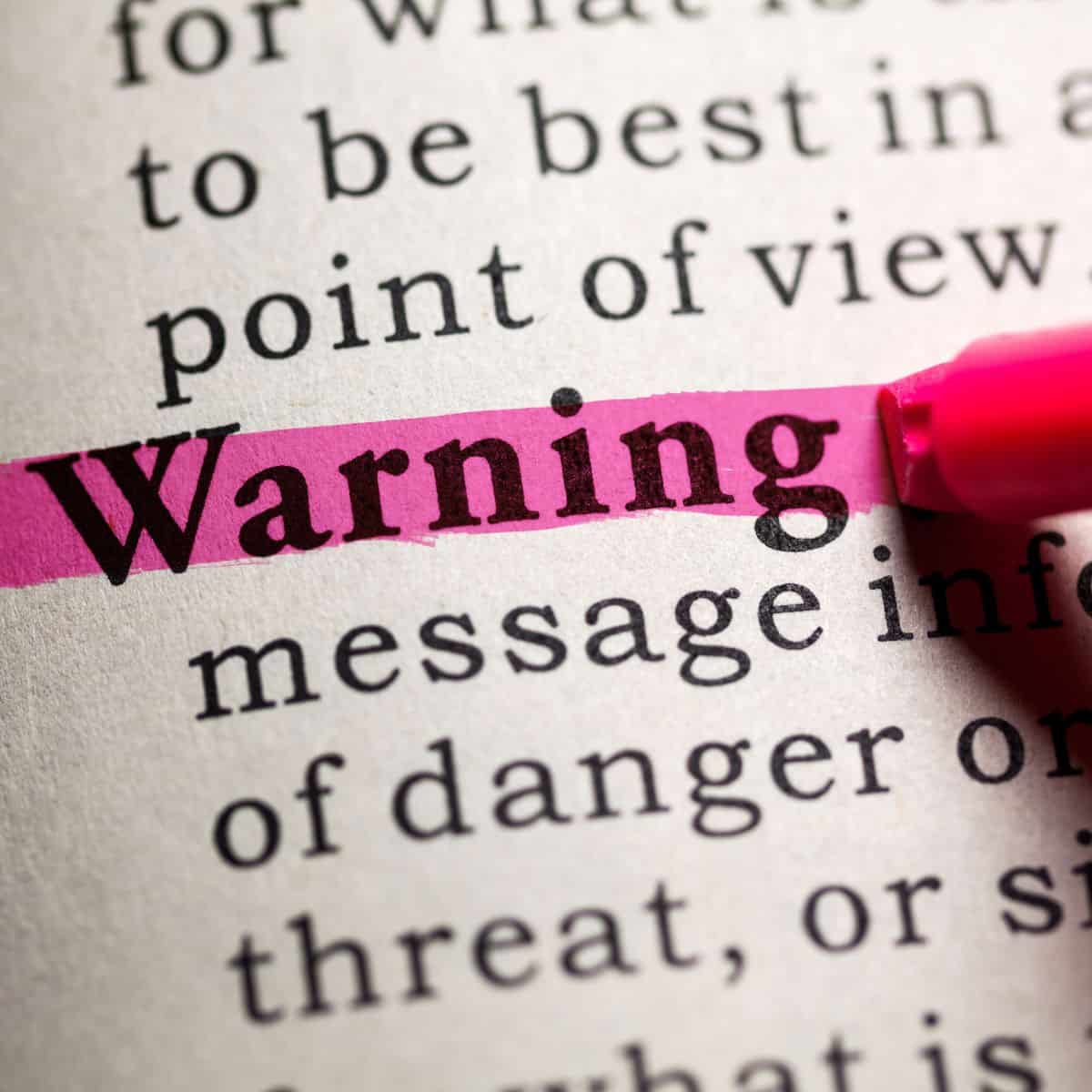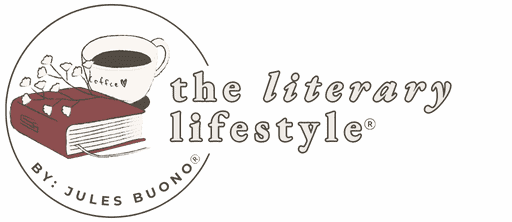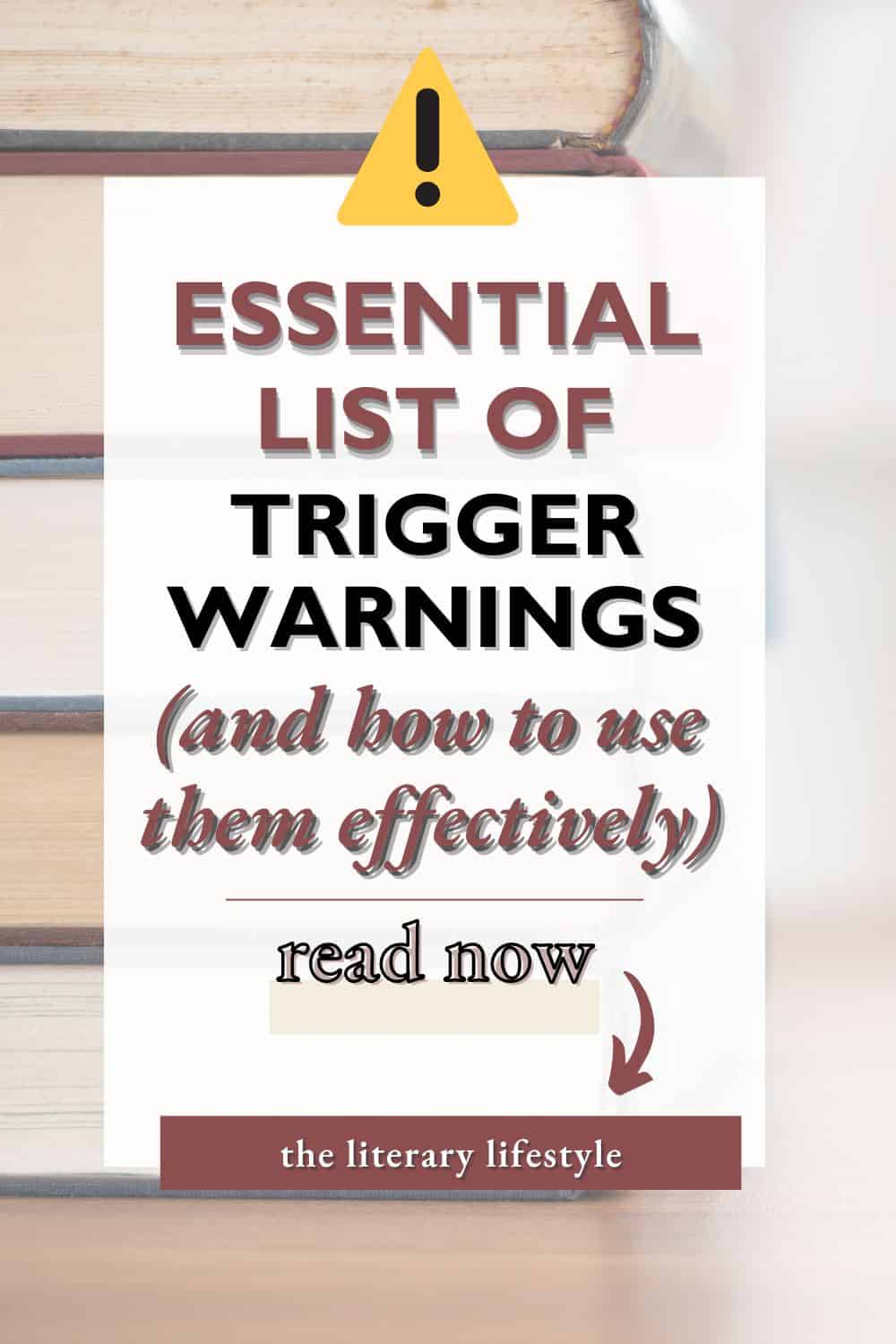Read without fear! These book trigger warnings help you understand the meaning and importance of such warnings by listing the most common examples and where to describe and/or find them yourself. You’ll be grateful for more pleasant reading experiences afterward. Let’s get literary!

Definition of Trigger Warning
A trigger warning is a verbal or written warning about content in media (such as books) that may cause a harmful physical, psychological, or physiological effect on a person who consumes it.
In other words, consuming certain content can “trigger” people to react negatively, including, but not limited to, anxiety, grief, or stress.
A trigger warning serves to advise a person of potentially harmful content before it is consumed in order to mentally prepare him or her for consuming it or to help him or her decide not to consume it.
List of Common Book Trigger Warnings
- abandonment
- ableism
- abortion
- abuse
- abusive relationship
- accidents
- addiction
- adoption
- alcohol
- amputation
- animal cruelty
- anxiety
- arranged/forced marriage
- attempted crimes
- blood
- bodily fluids
- bondage
- bones
- bullying
- burning/burns
- cancer
- cannibalism
- cheating
- child abuse
- childbirth
- classism
- clowns
- colorism
- coma
- confinement
- control
- cults
- death
- decapitation
- depression
- diets
- disability
- divorce
- domestic abuse
- drowning
- drugs
- dying
- eating disorders
- emotional abuse
- epidemics
- experimentation
- family conflict
- fat phobia
- fear
- fighting
- fire
- forced actions
- foster system
- gambling
- gangs
- gaslighting
- gender discrimination
- genocide
- ghosts
- gore
- graphic death
- graphic sex
- guns
- harassment
- hate crimes
- hazing
- homelessness
- homicide
- homophobia
- hospitalization
- hostage situation
- hostile work environment
- human trafficking
- illness
- incarceration
- incest
- infertility
- infidelity
- injury
- institutionalization
- kidnapping
- manipulation
- mass deaths
- mass shootings
- medical problems
- medical procedures
- memory problems
- mental abuse
- mental health issues
- military service
- miscarriage
- misogyny
- murder
- mutilation
- needles
- nightmares
- nudity
- organized crime
- outing
- overdose
- pain
- pandemic
- panic attacks
- paralysis
- physical abuse
- pornography
- physical assault
- police brutality
- political conflict
- Post Traumatic Stress Disorder
- poverty
- pregnancy
- pressure
- profanity
- racial conflict
- racial discrimination
- rape
- religious conflict
- religious discrimination
- robbery
- scars
- screaming
- self-harm
- self-hate
- shaming
- sexual abuse
- sexual assault
- sexual discrimination
- slavery
- smoking
- snakes
- spiders
- stabbing
- stalking
- starvation
- substance abuse
- suffocation
- suicidal ideation
- suicide
- terrorism
- threats
- torture
- transphobia
- verbal abuse
- victim blaming
- violence
- war
- weapons
- weather
- witches
Trigger Warning Examples
Common places to find book trigger warnings include:
- book reviews
- internet databases
- book descriptions
- before page one of a book
First, book reviewers often refer to trigger warnings and/or content warnings in their book reviews. On Instagram, book reviews often use the abbreviations “TW” or “CW” followed by a string of trigger and/or content warnings.
I often list triggers within my blog posts. A few examples include my trigger warning guides for these Colleen Hoover books:
- Verity Trigger Warnings
- Ugly Love Trigger Warnings
- Layla Trigger Warnings
- It Ends With Us Trigger Warnings
You can also find these types of posts by Googling: “[book title] trigger warnings.
Second, there are internet databases, like the book-reviewing platform Storygraph, where reviewers add trigger warnings for specific books. All you need to do is search the database for a book, then click to see the warnings for it.
Lastly, the publisher and/or author may offer trigger warnings in a description of a book or even before a story begins.
Recently, I read an effective book trigger warnings before page one of the dragon fantasy romance book Fourth Wing by Rebecca Yarros. It both offered a warning and felt like a part of the story itself, building suspense for the action to come:
Fourth Wing is a nonstop-thrilling adventure fantasy set in the brutal and competitive world of a military college for dragon riders, which includes elements regarding war, battle, hand-to-hand combat, perilous situations, blood, intense violence, brutal injuries, death, poisoning, graphic language, and sexual activities that are shown on the page. Readers who may be sensitive to these elements, please take note, and prepare to enter Basgiatah War College…
Frequently Asked Questions
You can find trigger warnings for books in book reviews, blog posts, internet databases, book descriptions, and even before page one of a book.
TW (trigger warnings) refers to generally difficult content to consume, such as violence and death. CW (content warnings) are broader and include things that aren’t triggering to the general population but may be triggering to a particular person.
No. GoodReads does not offer any specific listings of trigger warnings for books; however, you can read book reviews on GoodReads to locate triggering content.
Conclusion
Book trigger warnings can protect you and/or other readers from the negative effects of reading difficult content. You can describe and/or find trigger warnings for books in book reviews, blog posts, internet databases, book descriptions, and even before page one of a book.
Are there any common book triggers you would like to add to this list? Let me know in the comments below.



Religion in general. Just… churches or certain bits of Christian doctrine, even presented positively, can flash me back to Boarding/Residential School trauma
Thank you for this well-thought post and the suggestions for places to find TW and CW. This is a tricky business. I almost want to make my own list of additional items that might apply to extra sensitive populations such as Highly Sensitive People (HSP’s) and recovering addicts. Books can be a necessary distraction for these populations but not if they have particular triggers.
My suggestions, HSP or not, you decide, would be:
Natural disasters or just Disasters,
Climate Change, and
Extinction.
Thank you so much for making these contributions.
I wish books had trigger warnings for bondage and strong dom/sub relationships.
Meant to say generally OK. 😳
Maybe torture? Aside from that, I am generally as long as a dog does not die. Or a cat. Or, really, any animal.
I am totally with you on that! It’s one of my only triggers.
Excellent recommendation. I had thought I listed it already, but I missed it, so I will add it now. Thank you!